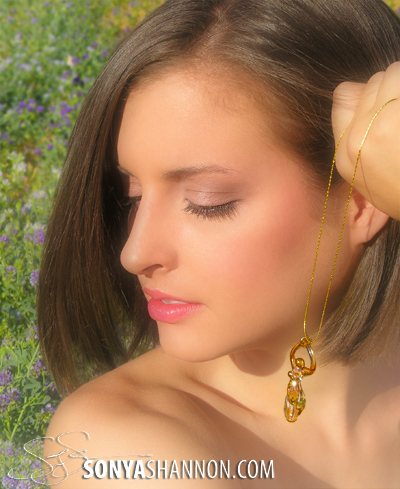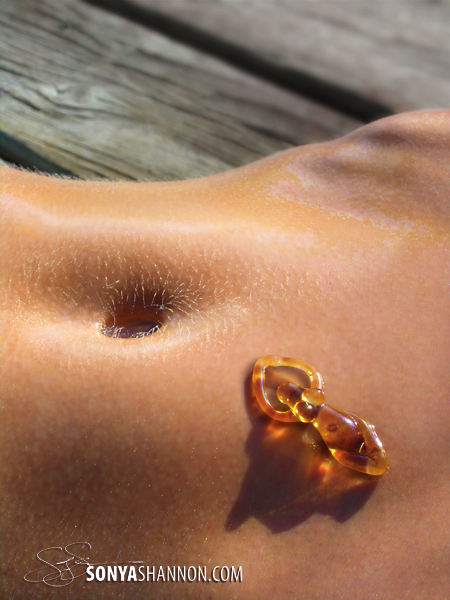
I left the goddess necklace sharp and blurred the rest of the image to focus the viewer's eye on the product.
Recently I have been exploring digital tools to enhance focus in photo retouching. If the source photo has good depth-of-field, most of the work is already done. But sometimes I have to work on photos that were shot with a point-and-shoot camera, or simply find other means for making the viewer’s eye look at the desired part(s) of the image.
One method I have been using is to digitally de-focus everything in the image except one point. I did this with some jewelry shots where beautiful models were photographed outdoors. Using the pen tool in Photoshop, I outlined the jewelry and put it on a separate layer using the outline as a mask. Then I decreased the clarity of the layer below, to soften the focus on the model. If you don’t have a version of Photoshop or Lightroom or another image processing tool that has a clarity function, you can achieve a satisfactory and similar effect by using a blur filter.
Just changing the sharpness of detail is one method, but there are others. When I studied animation at Sheridan College, we learned how to compose layers of space using value contrast. Let’s say there is a background, a mid-ground, and a foreground. If you alternate the value scale of each layer, you have something like this:
-or-
dark-light-dark
Using value contrast is one way to force the eye to the light points as well as enhance the depth of space in the image.
Another set of contrasts concerns atmospheric perspective, sometimes known as color perspective. In this case, one follows the rule set forth by Leonardo Da Vinci, where colors in the distance become cooler and less saturated, while in the foreground they tend to be warmer and more intense. I discussed this idea at length in my article “The Chrome Age: Dawn Of Virtual Reality.”
Please visit my portfolio site for some recent examples of photo-retouching that use color perspective.

Comments on this entry are closed.
Thanks for taking the time to explain things in such great detail in a way that is easy to understand.